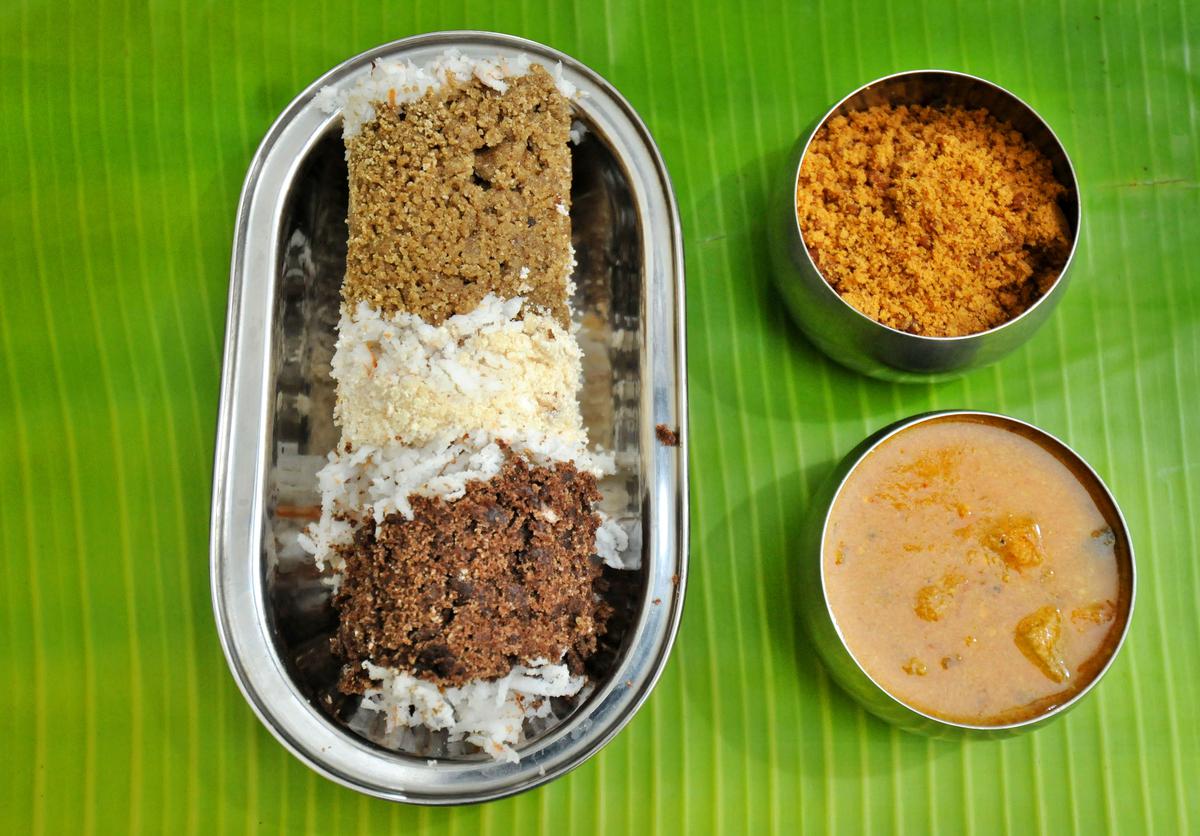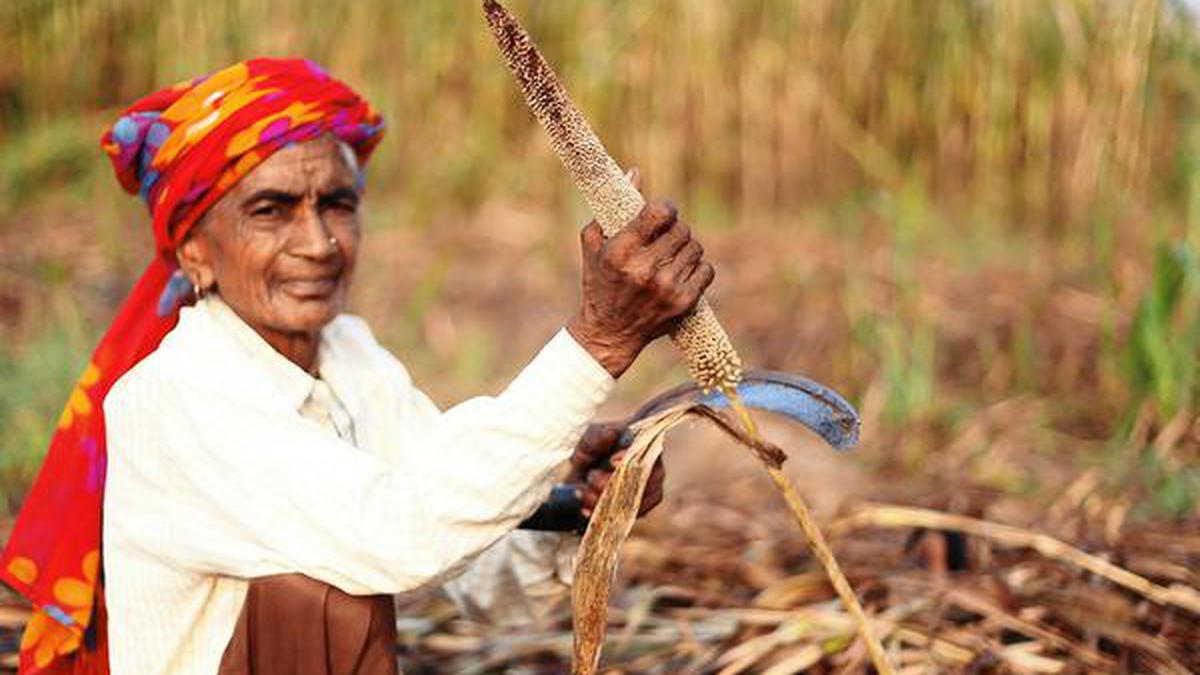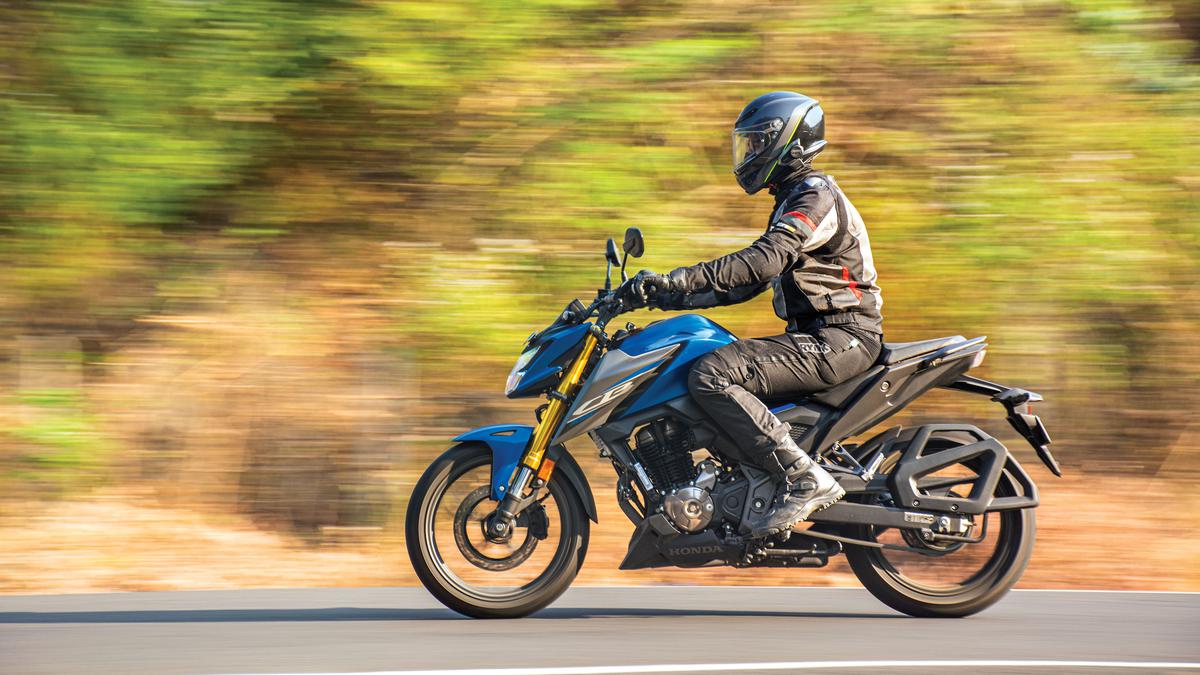Long before millet cookies were all the rage and millet pancake mixes lined supermarket shelves, an organic farmer in a village called T Kallupatti near Madurai readied his land for a sturdy crop. This was in 2007, when awareness on millets was limited to roadside kambankoozh (fermented pearl millet porridge.)
Pamayan started to cultivate thinai (foxtail millet), saamai (little millet), and varagu (kodo) because he thought they were the solution to many of the world’s problems: “They need less water and hence are good for the environment, are more economical to be cultivated than paddy, benefiting even small farmers, and carry health benefits for the consumer,” says the 60-year-old.
Ragi roti made with finger millet
| Photo Credit:
Sanju Nath G
Pamayan travelled across Tamil Nadu promoting millets among farmers through workshops and food festivals. Today, he supplies what he cultivates in his region, and at a collective farming setup in Tenkasi, to various places in Tamil Nadu, including Chennai, Coimbatore, and Tiruppur. “Many of them are organic shops that sell the millets either directly or as value added products such as mixes and flour,” he explains. Pamayan says that there is now an increased demand for millets as people are more aware of what they eat. “That prices have gone up is proof to this.”
With the United Nations declaring 2023 as the Year of The Millet, people across the world are talking about the grains. But millets have long been part of the Indian diet; we may have perhaps overlooked them briefly. “Other crops, such as corn, overtook them and farmers opted to cultivate what was more in demand,” Pamayan points out, adding that people have, especially over the past decade, woken up to millets.
Millets are hard crops and require very less water for cultivation
| Photo Credit:
MOHD ARIF
“I am now able to eat every millet dish I grew up eating,” he says. “This includes laddu made of roasted and ground thinai and powdered jaggery, thinai pongal and kanji (porridge). I ensure I have millets in my diet at least twice a week.”
Home bakers such as Barani Rajagopalan have upped their game by introducing customised millet brownies and chocolate cakes. Barani, who is based in Palani, says that her ragi chocolate cakes, that she sweetens with jaggery, are popular; so are her black kavuni rice brownies. Barani sells on Instagram, and says that she started incorporating millets when she set out to bake something gluten free for her customers who had allergies. “Millets are completely gluten-free,” she points out, and today, she bakes according to customer specifications, down to the millet variety to be used.
T Senthil Kumar, who, along with a group of friends started Coimbatore-based restaurant Thenthinai, took the millet route when he was in search of varieties that were believed to cure certain illnesses. The restaurant offers all-millet meals, that includes biryani made with millets and fermented ragi porridge mixed with buttermilk. At the restaurant, Senthil Kumar follows Karnataka-based Khadar Valli’s techniques, such as sticking to one variety of millet a day. Khadar Valli, known as the Millet Man of India, has been conferred the Padma Shri this year for his contribution to Science and Engineering.
But working with millets is not easy. Barani says that she soaks and sun-dries the grains before getting them ground in a mill to be used in her cakes and cookies. Says food researcher Maria Jenita, who is a research assistant with the Agro Production unit at Anna University, Chennai: “Millets have anti-nutrients that prevent the absorption of nutrients, and hence, it is important that they are processed well.”

Ragi, kambu and cholam puttu
| Photo Credit:
PERIASAMY M
Maria says that the best way to consume millets is by letting the grains sprout and fermenting them. “We have done studies to prove that consumers can get the full nutritive benefits of millets by washing them well and soaking them for a good eight to 10 hours before cooking,” she says, adding that one can also use millets after washing them and soaking in water with a few drops of lemon juice.
“Millets being dry crops, it is best that they are cooked with plenty of water, such as four cups of water for one cup of the grains,” says Maria. The easiest way to use millets, is perhaps in idli/dosa batter. “This way, they are soaked as well as fermented,” she adds.
There is no end to the number of ways millets can be cooked. Maria recalls the ancient Tamils’ thinai urundai, made of roasted and ground foxtail millet and honey. Then there is the age-old ragi koozh, fermented finger millet porridge served at Mariamman temple festivals.
Foxtail and finger millets are now available as flakes, noodles, pasta, and vermicelli. “I make pongal with saamai, thinai, varagu, and kuthiravaali,” says Barani. Pamayan likes his millets in porridge form. Among his favourites, is the little millet that when cooked, he says, is “as smooth as milk.”





